For astronomers who did not know how to celebrate the 10th anniversary of Tcheliabinsk event, sky deserves the best celebration we could even imagine! From February 13th, to 15th, 3 meteorite-dropper fireballs occured over France, Italy and Texas… and meteorites were recovered! Let’s celebrate!
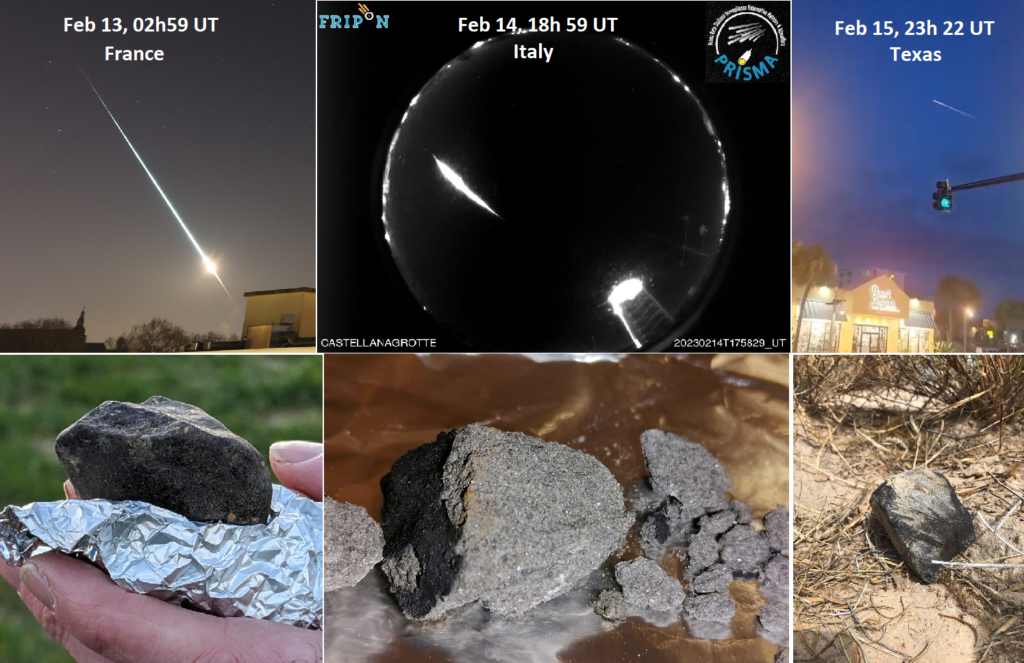
If you witnessed one of the mentioned events and/or if you have a video or a photo of one of them, please
Submit an Official Fireball Report
If you want to learn more about Fireballs: read our Fireball FAQ.
Feb 13, 02h 59min UT – France: 2023 CX1 asteroid entry and meteorites in Normandy
First fireball of the series have ever been documented on the IMO website, as it’s the 7th asteroid discovered prior its atmospheric entry. 2023 CX1 was discovered 7 hours before it entered the Earth atmosphere above the Channel on February 13th, 02h 59min UT, being widely observed and recorded by amateur and professional networks like FRIPON and UKMON. IMO/AMS Fireball report form received more than 70 reports (Event #937-2023) from France, Great-Britain, the Netherlands and Belgium (Figure 1).
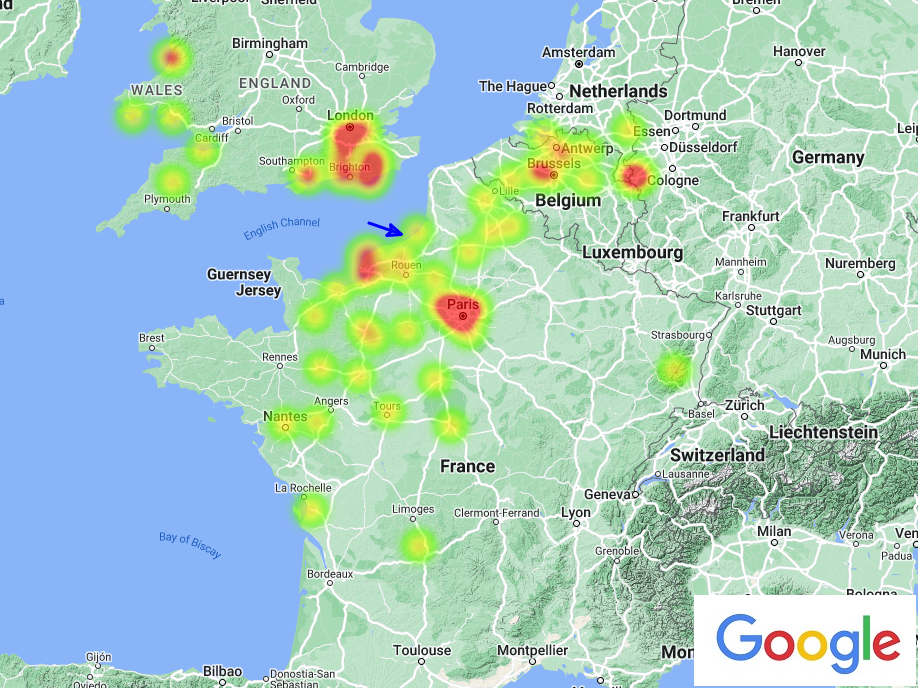
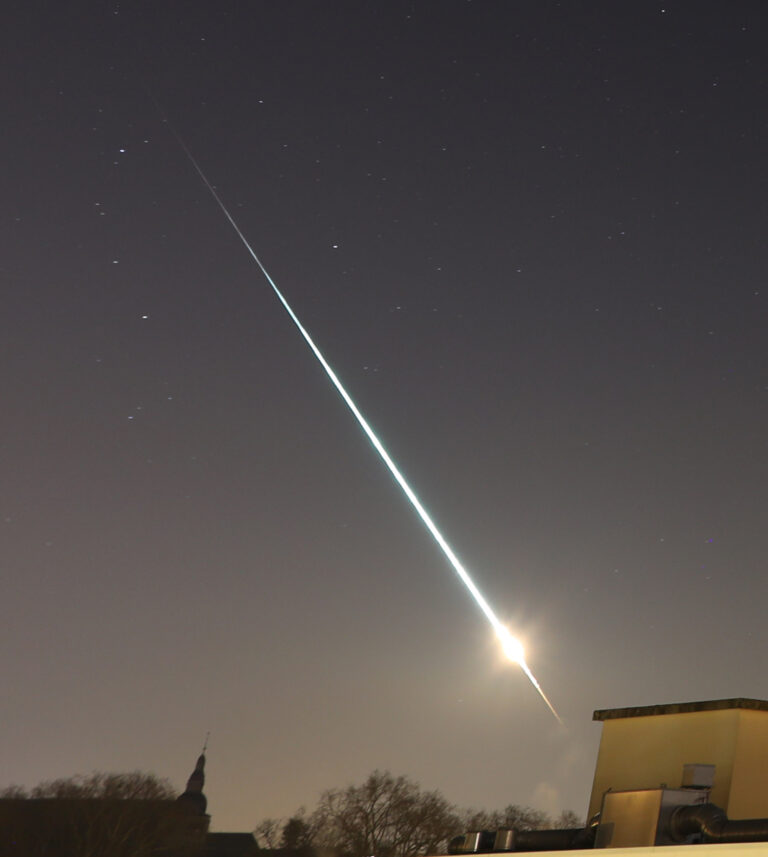
Two days later, a team composed by professional and enthusiastic volunteers led by FRIPON/Vigie-Ciel found the first ~100g meteorite piece of what would lead to multiple recoveries (Figure 3). Up to today, more than 10 meteorites fragment shave been recovered, and research teams are going on looking for pieces of this 1-m diameter asteroid.

Feb 14, 17h 58min UT – Italy: Saint-Valentin’s day fireball and meteorites North of Matera
39 hours after this fireball, on February 14th, 17h 58min UT, another meteor enlighted the sky above Southern Italy. The fireball was widely observed from Italy, Croatia and Slovenia (Event #1009-2023) at the beginning of the evening (Figure 4). It was also recorded by 3 cameras of the PRISMA video network (Figure 5).
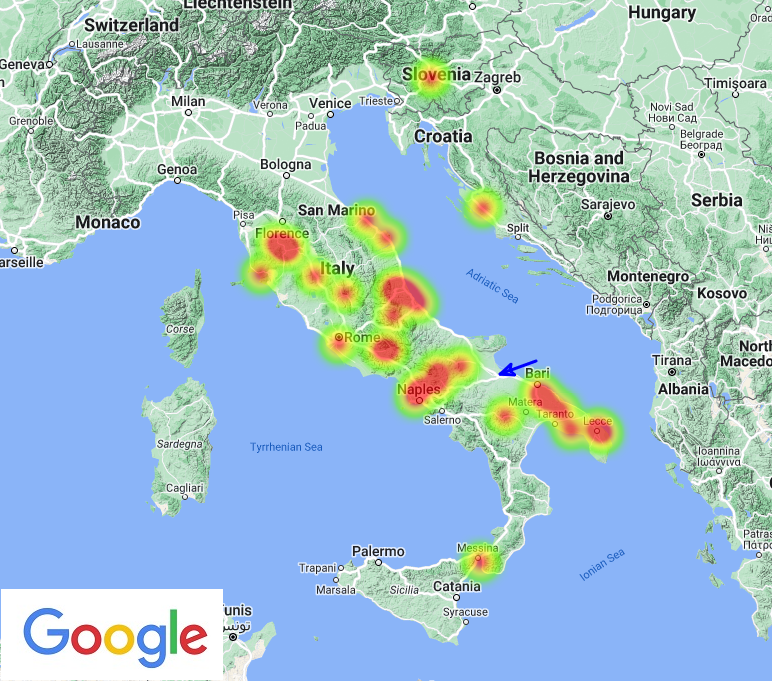
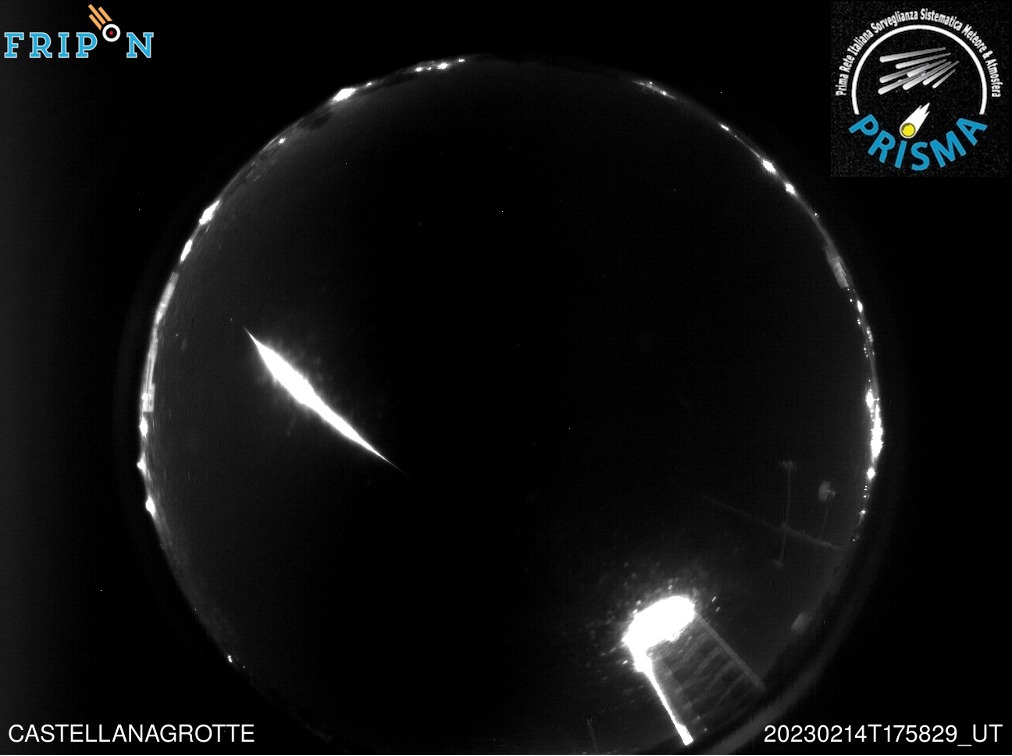
Using this recordings, the meteorite strewn field was calculated by PRISMA and indicates a zone North of Matera, alerting medias and local population on February 15th. The same day, two brothers, Gianfranco and Pino Lossignore found pieces of what looks like meteorites landed on the balcony of their parents house (Figure 6): the 300 km/h falling rock even slightly damaged it! Numerous fragments have been recovered, the 12 bigger weighting 70 g in total. Researches are going on to try to find more fragments.
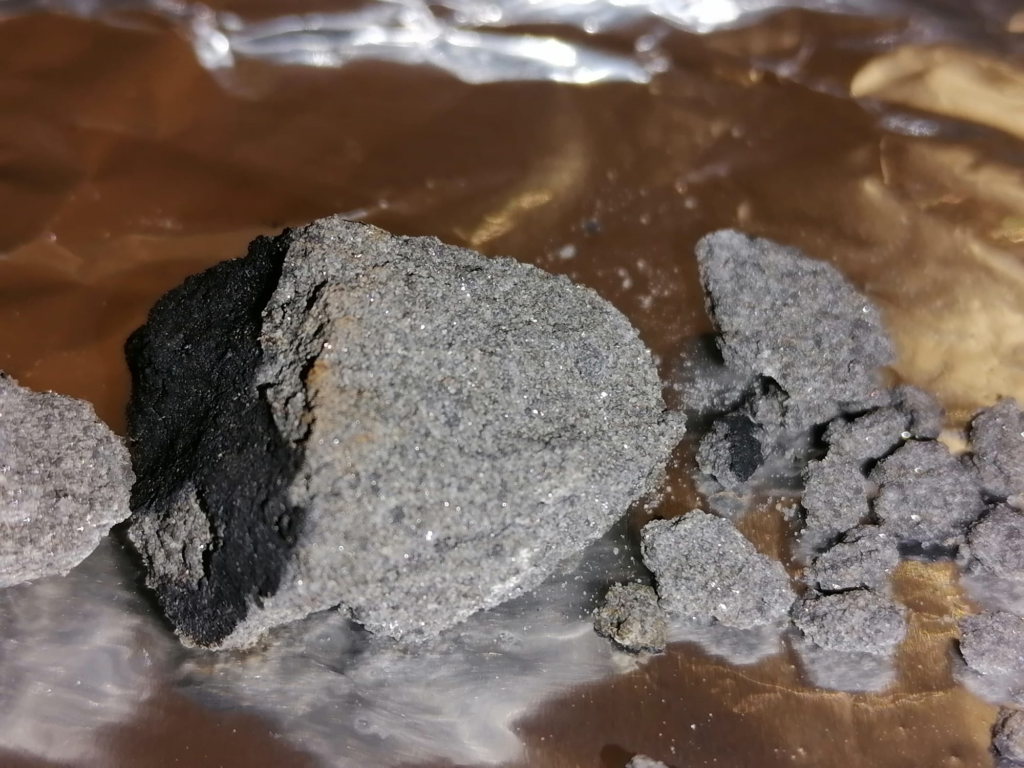
Feb 15, 23h 22min UT – United States: McAllen fireball and meteorites in Southern Texas
Last but not least meteor of the series was observed in Southern Texas on February 15th, 2023, at 23h 22min UT by a few observers (Event #1036-2023) when, according to NASA, a 60-cm and 450-kg meteoroid entered the atmosphere (Figures 7 & 8).
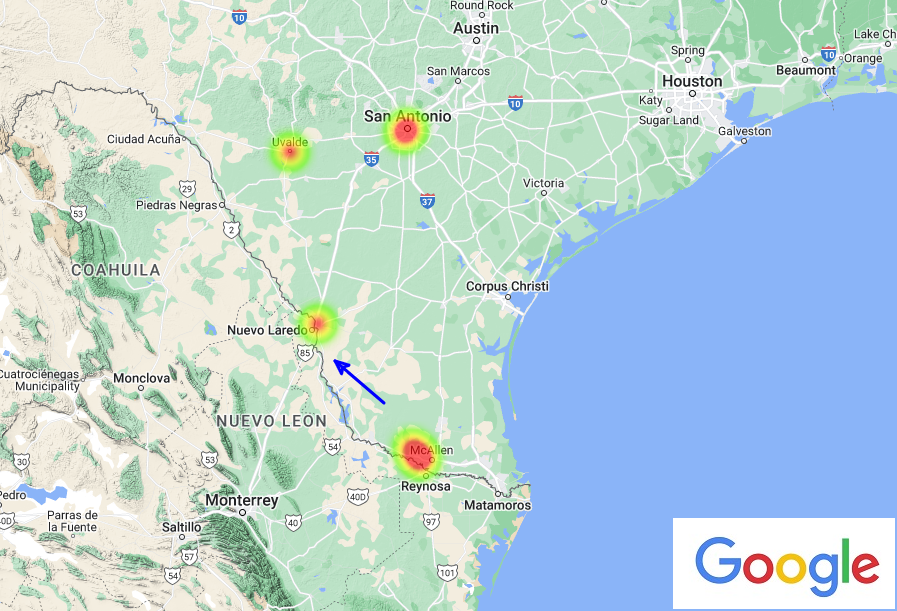
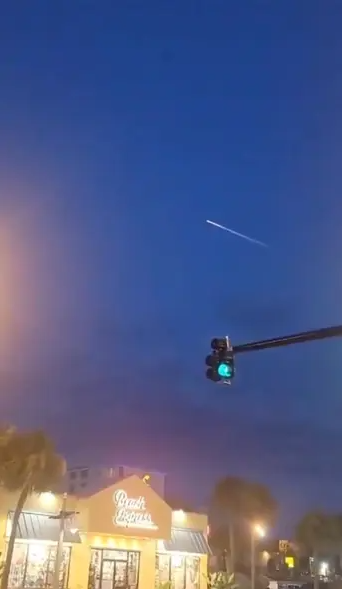
On February 18th, first meteorite fragment was recovered (Figure 9).

Fireball, Bolide?
Several thousand meteors of fireball magnitude occur in the Earth’s atmosphere each day. The vast majority of these, however, occur over the oceans and uninhabited regions, and a good many are masked by daylight. Those that occur at night also stand little chance of being detected due to the relatively low numbers of persons out to notice them.
Additionally, the brighter the fireball, the more rare is the event. As a general thumb rule, there are only about 1/3 as many fireballs present for each successively brighter magnitude class, following an exponential decrease. Experienced observers can expect to see only about one fireball of magnitude -6 (crescent moon) or better for every 200 hours of meteor observing, while a fireball of magnitude -4 (Venus) can be expected about once every 20 hours or so.
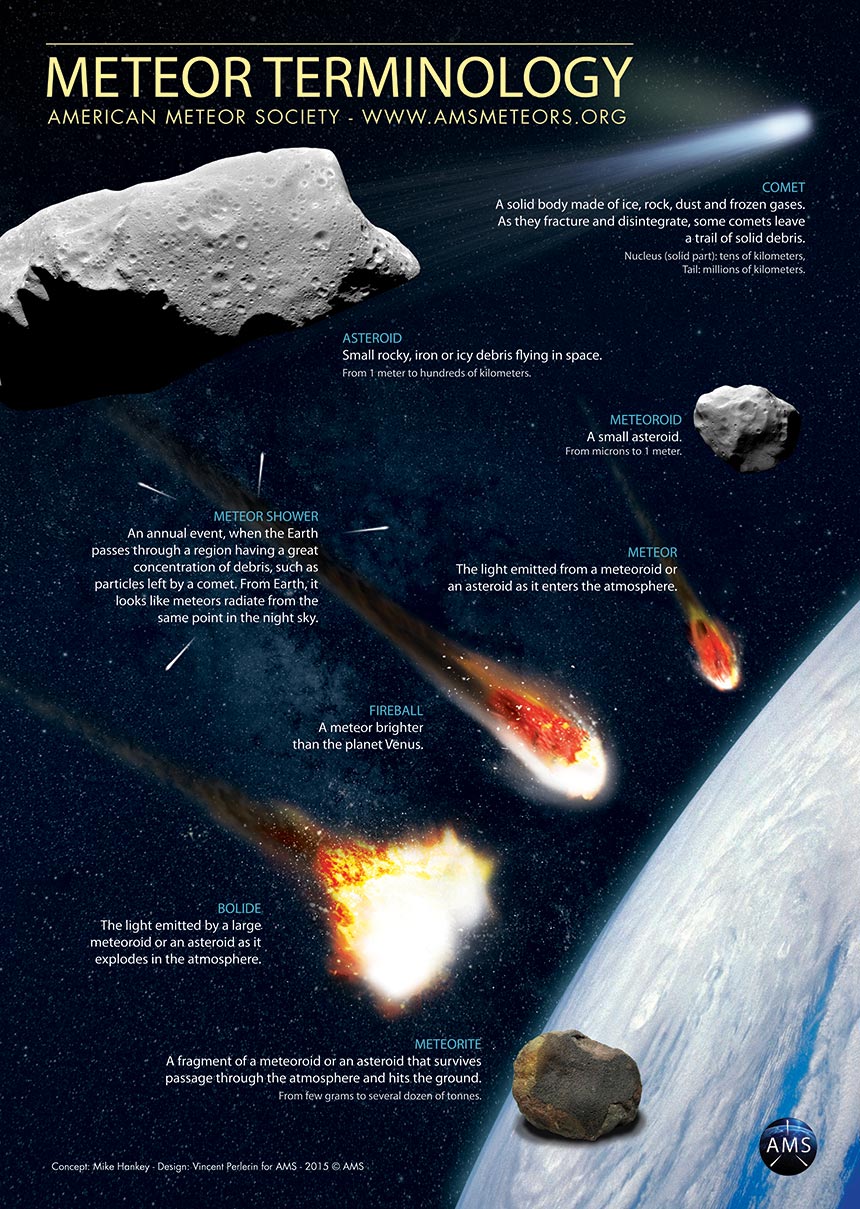




 You saw something bright and fast? Like a huge shooting star? Report it: it may be a fireball.
You saw something bright and fast? Like a huge shooting star? Report it: it may be a fireball.  You counted meteors last night? Share your results with us!
You counted meteors last night? Share your results with us!  You took a photo of a meteor or fireball? You have a screenshot of your cam? Share it with us!
You took a photo of a meteor or fireball? You have a screenshot of your cam? Share it with us!  You caught a meteor or fireball on video? Share your video with us!
You caught a meteor or fireball on video? Share your video with us!
10 comments
Awesome
Excellent article Karl.
My Watec 902H2S video camera captured a momentary light flash from Leceistershire UK from the SAR 2667 explosion.
I witnessed one of these in Stuart,FL on the evening of the 18th! This is awesome information because I knew I saw what I saw! It looked like a fireball falling from the sky and seemed to be visible for what seemed like a couple minutes lol. It was an awesome sight how it lit up the sky!
I saw something strange around 10 PM on the 19th in Henderson, NV, seemed like a slow moving shooting star that split in two halves but there was no tail. A bush obscured my view and it may have been a bird with white wings. But it didn”t flap as I watched it fly out of view.
My husband and I saw one last night the 19th while traveling North of Dayton, Ohio . It was quite a sight!!
Saw a fireball falling over as we were driving over the 9th st.bridge ,OC NJ on 2-17-23 around 9pm
Truly a meteor harvest.
It surprises me these networks of all sky cameras are not well known, especially in the USA where it looks like there’s not something like FRIPON or PRISMA.
I saw a fireball Feb 17
It only lasted a few seconds
But it was awesome to see it
Great article. I would love to witness a bolide flying over Central Pennsylvania. I am usually disappointed with the annual meteor showers for various reasons.
I always mumble to myself- let’s see a fireball!
Strange that no reports of sightings of this Texas fireball are listed! It is not heavily populated in that part of the state. Glad they were able to find such a large fragment.